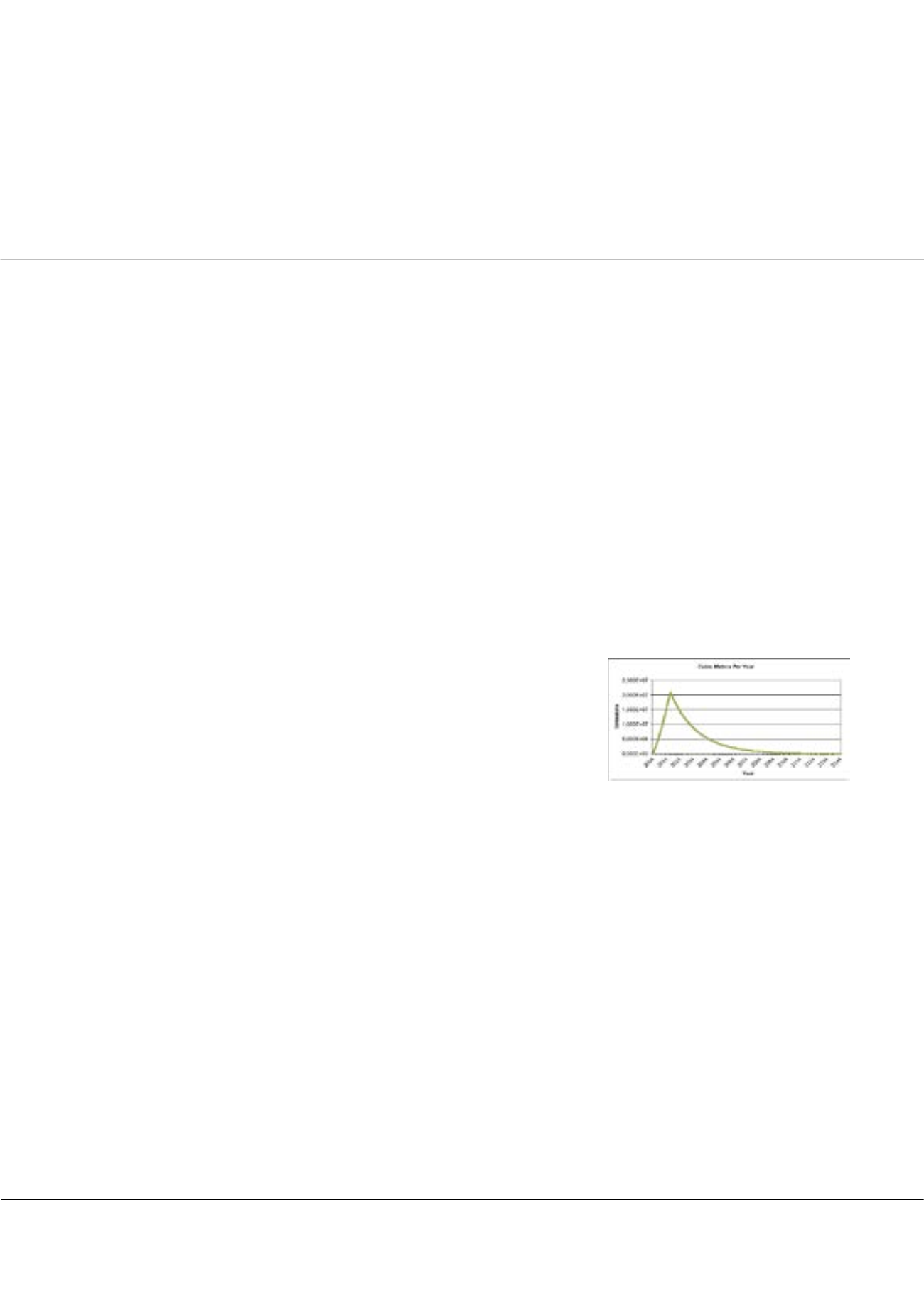

Page 78
conferenceseries
.com
Volume 9
Journal of Bioremediation & Biodegradation
ISSN: 2155-6199
Biofuel Congress 2018 &
Biomass 2018
September 04-06, 2018
JOINT EVENT
September 04-06, 2018 | Zurich, Switzerland
13
th
Global Summit and Expo on
Biomass and Bioenergy
&
12
th
World Congress on
Biofuels and Bioenergy
Estimated production of electrical energy for the controlled landfill in Fez (Morocco) by the US EPA
Land-GEM model
NAIMI Youssef, Saghir Mohammed
and
M. EL Chbihi
University of Hassan II Casablanca, Morocco
T
hroughout this article, we will present, in the case of the controlled discharge of Fes which first at the national level is it,
even on the level of Africa, It makes it possible to control all the effluents, while preserving the environment of the city. The
discharge it is the state of the places of production of electrical energy and thermal energy by the cogeneration. The current
production of household wastes in urban environment in Morocco is at 5.3 million tons a year, and in rural environment
1.47 million tons a year. With population growth, rapid urbanization and changes in consumption patterns, household waste
production in Morocco is increasing. The rate of setting in controlled discharge is of 35%, this rate will have to reach 64% after
the opening of several controlled discharges, which are in the course of construction [2]. Household waste in Morocco contains
65%-75% organic matter, so landfills in Morocco are one of the sources of biomass. According to the calculations of the energy
potential of biomass, we can deduce that the amount of electricity that could produce by incineration of household waste from
the Rabat region is about more hundred gigawatt-hours [3].
In this study, we used several techniques of calculation and modeling:
• IBM - Software SPSS,
• Technique of calculation for waste tonnage on the level the controlled discharge
of Fes,
• Software Landfill Gas Emissions Model (LandGEM) version 3.02 of the USEPA,
• Equation potential of production of electrical energy starting from the methane
recovery of the discharge,
• Equation of the thermal power released by the thermal engines of generator.
We will show that the quantity of the electrical energy estimated by the methanation
of household wastes of the discharge of Fes is 65.5 GWh/year, and then these
quantities are currently available to the level of the discharge of Fes. This alternative
allows a reduction of tonnage of accumulated waste.
Recent Publications
1. Funds of Communal Equipment in Morocco and the World Bank, “Diagnosis of the System of Environmental Evaluation
in Morocco”, August 17th 2011, p.11-77
2. Delegated minister In charge of the Morocco Environment, “Current situation of waste management domestic and
compared to Morocco”, Organization of the 24th meeting of the National committee of the PNDM on October 2th, 2013
3. Y. Naimi, M. Saghir, A. Cherqaoui, B. Chatre, Energetic recovery of biomass in the region of Rabat, Morocco, International
Journal of Hydrogen Energy, Volume 42, Issue 2, 12 January 2017, Pages 1396-1402.Lin and Yavari (2015), “Upper bound
of polymeric membranes for mixed-gas CO2/CH4 separations”, Journal of Membrane Sci. Vol. 475, pp. 101-109
Biography
Naimi Youssef has his expertise in the felds of renewable energies, and particularly in biomass, fuel cells, and environment. He is Full Professor at Sciences
Faculty of Ben M’sik, the University of Hassan II of Casablanca. He is a Vice-President of association, The Moroccan Society for Advancement of Renewable
Energy (SMADER), Coordinator of the course "Chemistry of the Environment" License Materials Science Chemistry (SMC), responsible for the Specialized Master
"Renewable Energy and Material".
youssefnaimi@outlook.com youssef.naimi@univh2c.maNAIMI Youssef et al., J Bioremediat Biodegrad 2018, Volume 9
DOI: 10.4172/2155-6199-C1-014
















